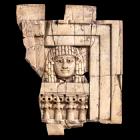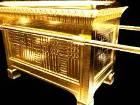Ancient temples in Bible times
What did ancient temples look like?
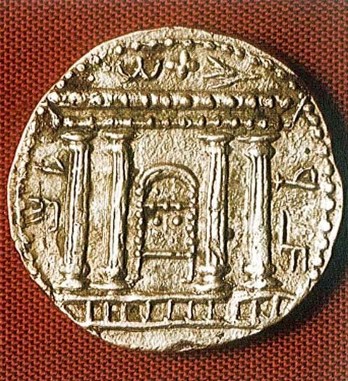
1st century coin showing the exterior of the Jerusalem Temple
Temples in the ancient world were different to modern churches –
- in their design, and
- in how they were used.
- Ordinary people, even those who had come to worship, did not go inside the temple. The temple belonged to the god. Priests could enter, but ordinary people were expected to stay outside.
- Ancient temples were much smaller than modern-day churches – only about as big as a modern house.
There were two basic designs for temples in ancient times. You could have:

Cut-away model of the Temple of Dagon
- an altar at a ‘high place’, either a mountain top or a man-made simulated mountain like the ziggurats (see image below)
- a single, highly decorated building, usually within a city, such as the Temple of Jerusalem, the temples to Athena and Zeus in ancient Greece (see pictures below), the Canaanite temple at Lachish, or the temple destroyed by the Bible strongman Samson.
Neither of these designs were meant to hold a congregation of worshippers in the way a modern church does.
Temples belonged to the gods, not the people.
What did a temple exterior look like?
Here are some examples.
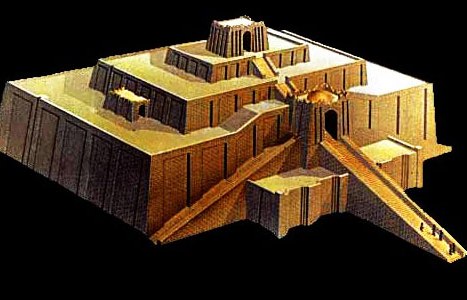
Reconstruction of the ziggurat at Ur, as it was in ancient times
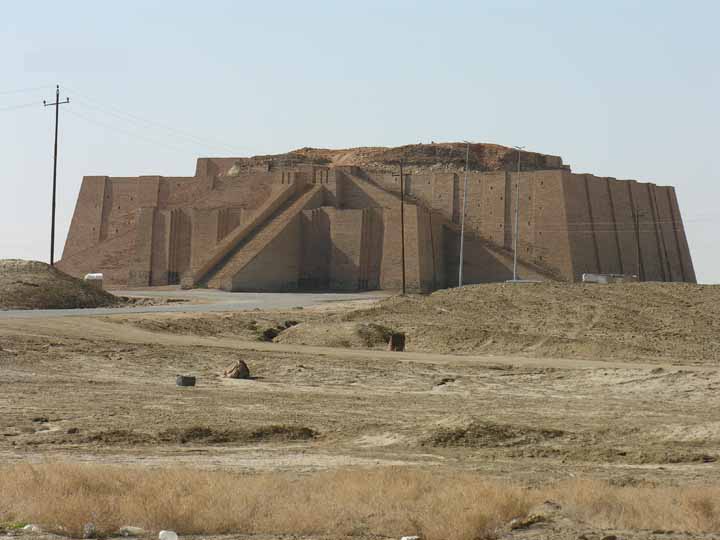
The ziggurat of Ur today, with reconstructed outer walls. This mighty temple dominated the land from which Abraham and Sarah came.
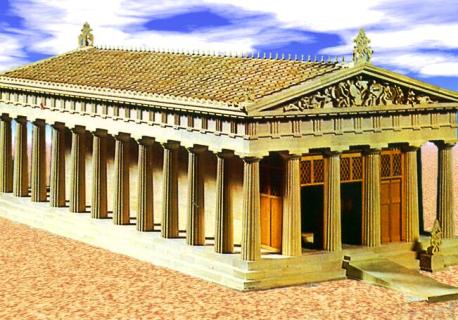
Reconstruction of the Temple of Athena in Athens. The original temple was painted in bright colors
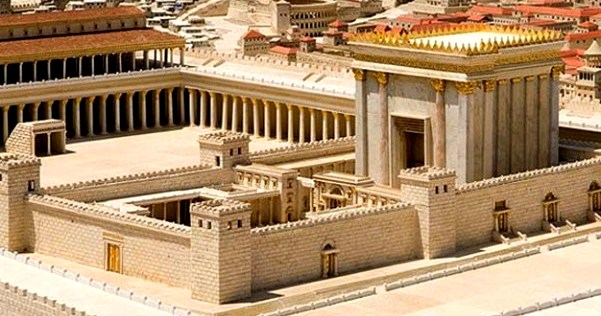
Reconstruction of the Temple of Jerusalem, 1st century AD
What were ancient temple like inside?
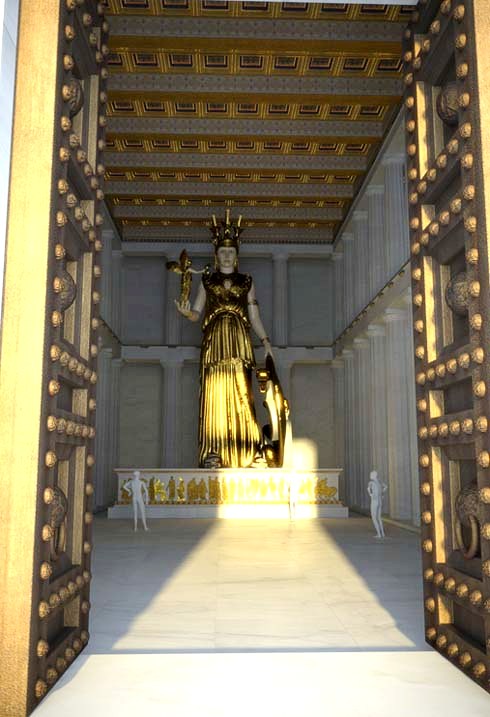
Reconstruction of the inner room of the Temple of Athena in Athens. Athena appears as the goddess of war. She confronts her viewers directly, wearing Medusa’s head on her leather aegis (a protective collar or cape), a statue of Nike, (victory) in her right hand and a shield in her left. The skin area of the statue was covered with ivory, the armor and drapery with gold.
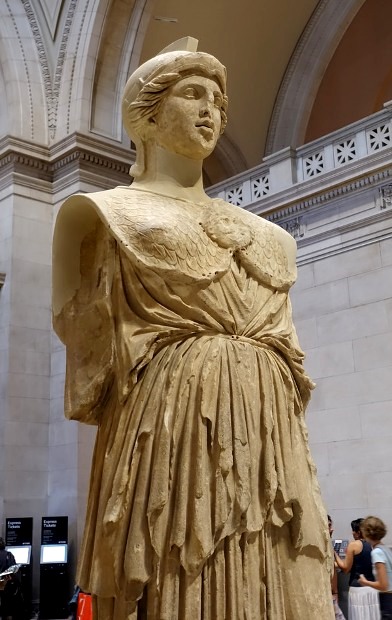
Statue of Athena in the Metropolitan Museum, New York. Judge the size of the statue by comparing with the human figures at right
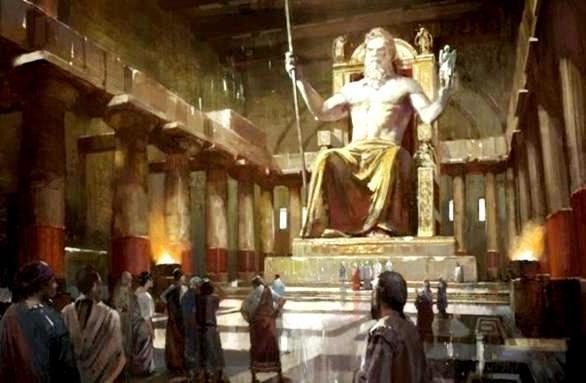
Reconstruction of the inner chamber of the Temple of Zeus,
at the ancient town of Olympia on the west coast of Greece
Sports and religion together?
The ancient Greeks believed that each person had a responsibility to develop a well-educated mind and a healthy body. Games and sporting activities were therefore an important part of Greek culture.
The city of Olympia was a center of religious worship dedicated to Zeus, and it was around the temple there that the first Olympic Games took place. During the Games, warfare was laid aside – enemies forgot their grievances and competed without rancor even if they had recently been at war.
It seems strange to us now, but the first Olympic Games were preceded by days of religious ritual. Only after these were completed could the Olympic games begin.
The Games were financially supported by rulers in Greece and in surrounding countries. It might surprise you to know that King Herod the Great, who ruled Palestine at the time that Jesus was born, contributed to the cost of the Olympic Games during his reign.
The Canaanite Temple at Lachish
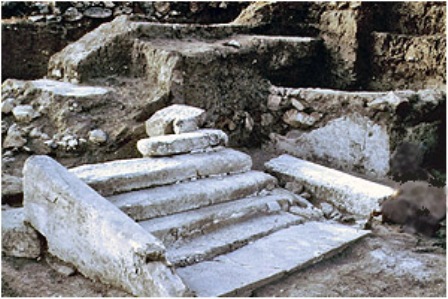
Excavated stairs leading to the temple cella at Lachish
The 15th century BC Canaanite temple of Lachish and its sacrificial altar had a simple layout.
- There was a long sanctuary with two attached rooms, only one of which was entered from the sanctuary.
- There was no inner room or Holy of Holies as in the Temple in Jerusalem.
- The roof was apparently supported on columns, probably of wood.
- The entrance was screened by a wall which prevented a view into the sanctuary from the outside.
By the standards of later temples, the shrine was simple. It had a low bench, one foot high, from the front of which three rectangular blocks projected.
One theory is that the cult objects stood on the bench and the projecting blocks served as altars. The existence of three projections suggest that a trinity of deities was worshipped.
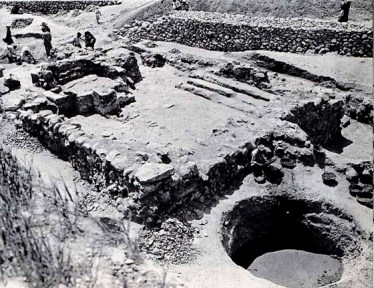
The excavated temple at Lachish
In the central axis in front of the shrine were two jars sunk in the floor, which may have been receptacles into which libations were poured, while against one end of the bench was found a great pile of vessels, abandoned when the temple was rebuilt, which presumably served as containers of liquid and solid offerings.
Outside the temple there were a number of pits used for the disposal of vessels which had served a similar purpose. There was also a long bench along one wall.
The remains suggest that the deities worshipped in this temple and its successors were Resheph, the Canaanite-Syrian god of war and storm, and possibly the goddess Elath.
Tantilising religious relics
The Woman at the Window
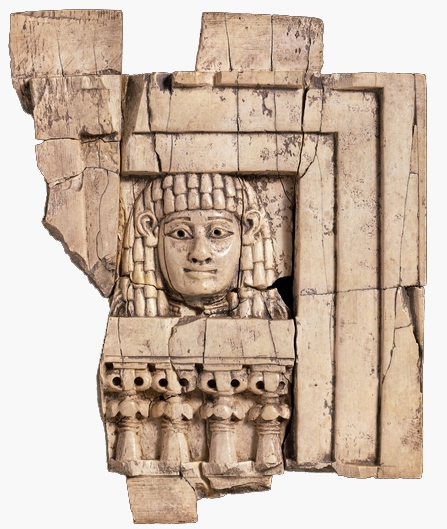
Woman at thewindow, ancient ivory plaque
The ivory plaque at right is similar to ones found in the ruins of the palace at Samaria, the ancient Israelite city built by King Ahab, husband of the autocratic queen Jezebel. Delicately carved plaques were attached to furniture and screens (Amos 6:4).
The theme of the ‘woman at the window’ appears several times in the Bible, but its exact significance is lost.
There may be a clue in the Book of Judges, where the mother of the slaughtered enemy general Sisera stands at a window -see the story of Deborah and Jael. She is waiting for the son who has been murdered and will never return.
Jezebel appears at a window immediately before she is hurled down to her death (see Jehu murders Jezebel)
The Baal figurine
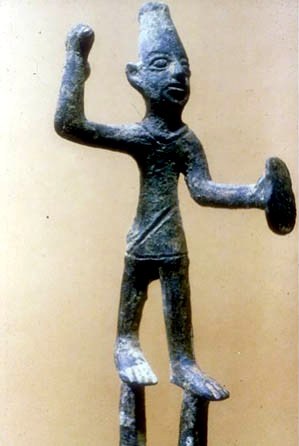
Small cult statue of the ancient god Baal
The image at right shows an ancient bronze figure of the rain god Baal – important to a people who depended on farming and herding. Originally he would have held a club and a spear in his hands – symbols of thunder and lightning.
The Canaanites worshipped several gods; the two most important were Asherah and Baal.
Asherah was the mother of Baal and is often shown with a Tree of Life. The word ‘Baal’ originally meant ‘husband’, and he was the source of water and fertility – hence life.
Astarte, another goddess, was the consort of Baal. She was the protectress of the family.
Philistine incense burners
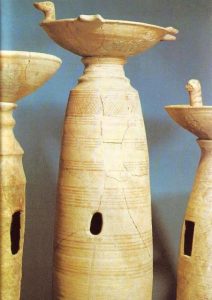
Ancient Philistine incense burners
Burning incense was a common form of religious ritual.
The Temple in Jerusalem may have had large incense burners in the forecourt of the Temple.
Bronze Bull statuette
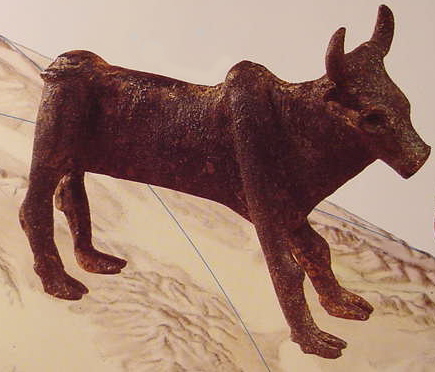
Bronze statuette of a bull, ancient, from northern Israel
found in northern Israel at an open-air sanctuary.
The bull calf was a common fertility symbol in the ancient world.
In the Old Testament, the Israelites grew tired of following Moses, and while he was on Mount Sinai they made a Golden Calf (see Bible People: Moses).
Jeroboam set up bull images at Bethel and Dan when he formed a breakaway kingdom of Israel (1 Kings 12:28)
Minoan snake goddess
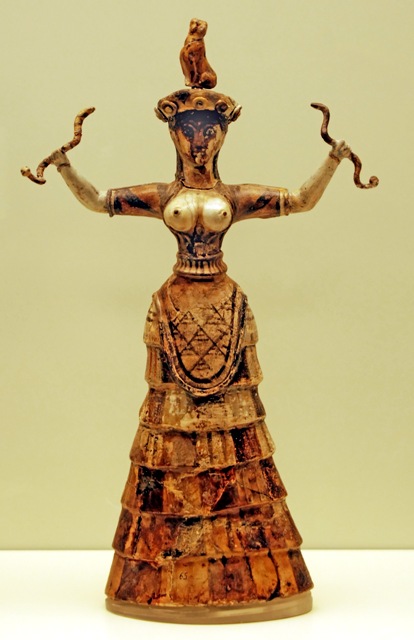
Cretan snake goddess or priestess
People sometimes interpret the woman’s bare breasts as a fashion statement, saying that Minoan woman, or perhaps just Minoan priestesses, wore clothes that exposed their breasts.
In fact, the bare breasts in Minoan statuettes and paintings may have been symbols for a goddess who fed and nurtured the human race, as babies are fed and nurtured by plentiful mother’s milk. The earth was still venerated/worshipped as the Great Mother who fed, sheltered and protected humanity.
The snakes the goddess/priestess carries may have been a symbol of triumph over death. Snakes shed their skin and thus appear to die once a year, but then reappear again alive.
Snakes also appeared prominently in a number of ancient fertility religions, and so may have been seen by the writers of the Bible as symbols of evil.
Search Box
![]()
© Copyright 2006
Elizabeth Fletcher



